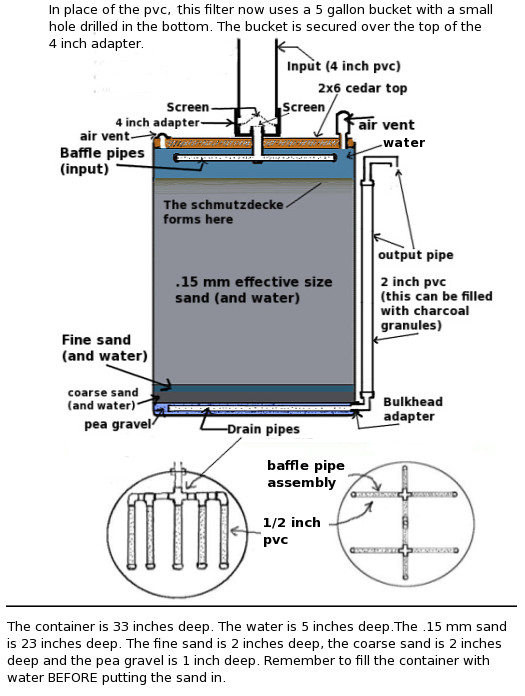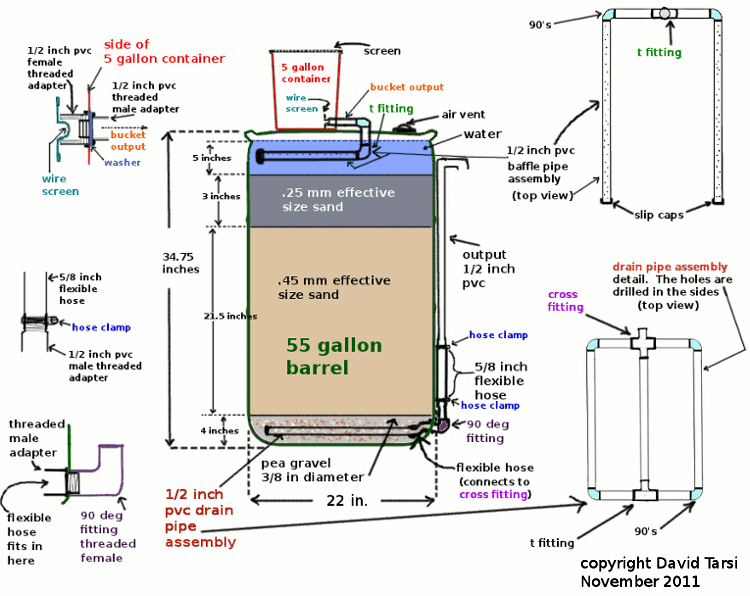
Links
Home
System overview
What to test for
> Filter pictures
Water clarity
First flush diverter
2500 gallon cistern
About this website
Water Test Results
Conditions of Use
PDF Version
External links
Slow sand filter FAQ
Home
System overview
What to test for
> Filter pictures
Water clarity
First flush diverter
2500 gallon cistern
About this website
Water Test Results
Conditions of Use
PDF Version
External links
Slow sand filter FAQ
Filter pictures
|
Please help support this site by purchasing, for $7.50, a summary of the most important results of our research for the past 8 years, including detailed drawings of the filters. This page on our blog has the purchase area. Thank you!! |
The filter shown in the first two images below (referred to as Filter 1 and "old filter" in the tests) has been in operation for 5 and a half years (as of July 30 2012). The most recent test was January 2011. It removes hydrocarbons, chemicals, and harmful bacteria from roof water harvested from a composition roof. The lack of contamination in the output water exceeds EPA and local county standards for drinking water quality.
Important: This filter is not recommended for use as a drinking water source. The tests mentioned here are only valid for this specific filter, time, place and input water. Do not drink water from any source without first having your local health department approval. You have been advised.

A Slow Sand Filter (sometimes called a Biosand filter or biological sand filter) works like this as water flows through it:
Because all water (with the exception of distilled water) contains bacteria, a biological living community of beneficial aquatic microbes grows in the top few inches of the sand; and literaly feeds on bad bacteria. Gradually a biofilm (often called Schmutzdecke; a German word for dirt blanket) forms that makes the purification process even more efficient. After about 3 weeks, this biofilm and its benefical microbes remove 99.999 percent of all bad bacteria and protozoa from the water that flows through the properly funtioning filter. Giardia lamblia which causes Giardiasis (beaver feaver); and Cryptosporidium which causes Coccidiosis (sometimes confused with Giardiasis) are also removed. A properly functioning slow sand filter is more effective at removing Giardia Lamblia and Cryptosporidium than most public water supply systems. Chlorine and ozone are not highly effective aginst these microbes and only kill some of them but do not remove them. The slow sand filter actually removes them. A slow sand filter purifies water - it removes disease causing microbes - chlorine or ozone sterilize water by killing, but do not remove the dead microbes.

Below is a drawing of filter 4. (This is a different filter than the one pictured above) Notice that this filter uses coarse sand for the majority of its filtration media. Finer sand is recommended.
For more about the specific design see the filter specifications page.
